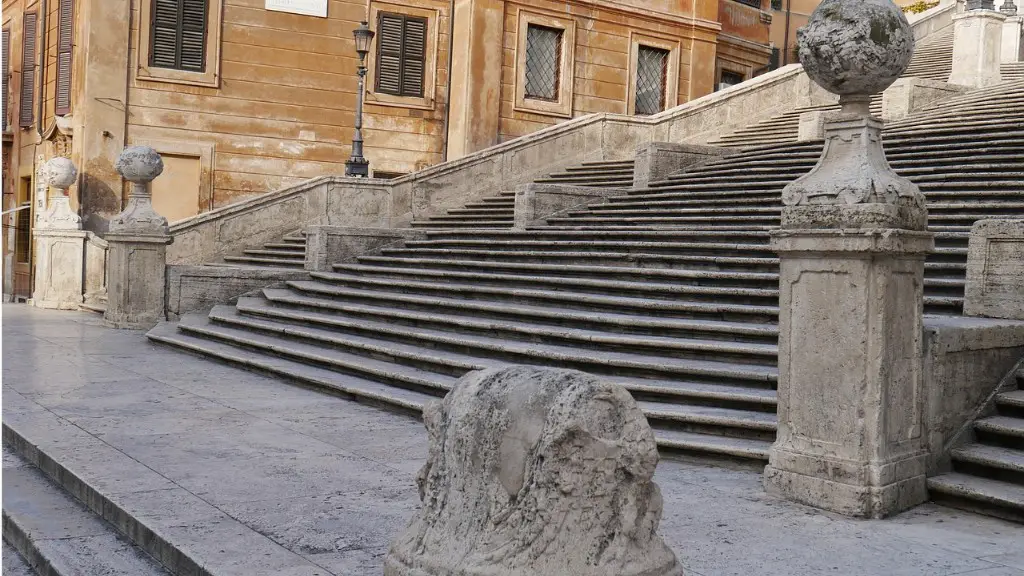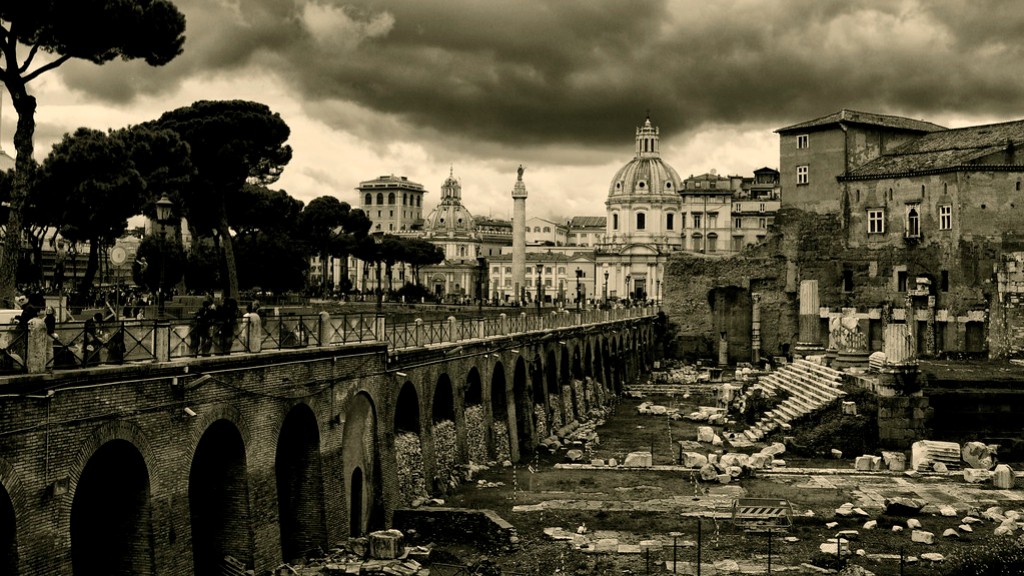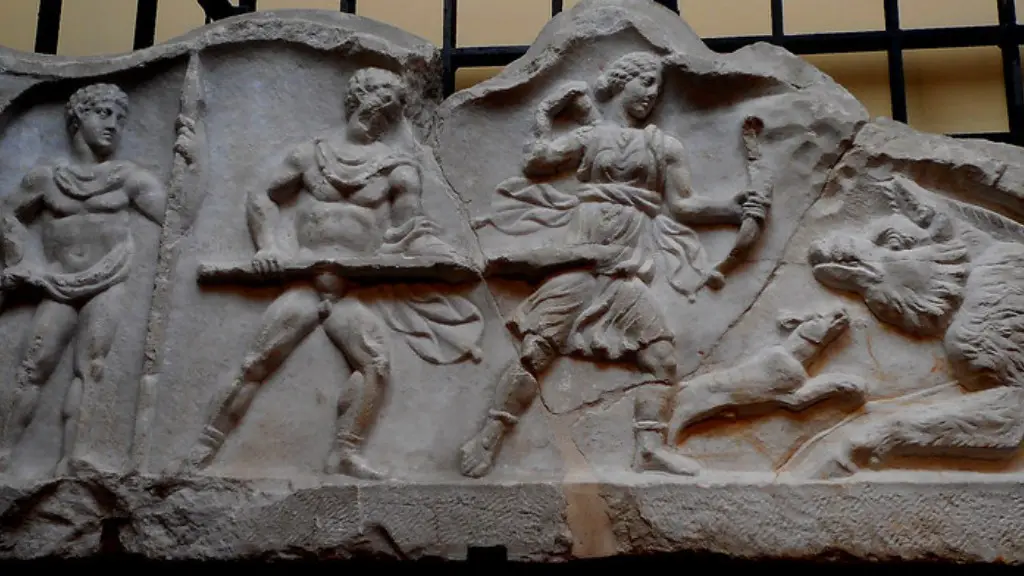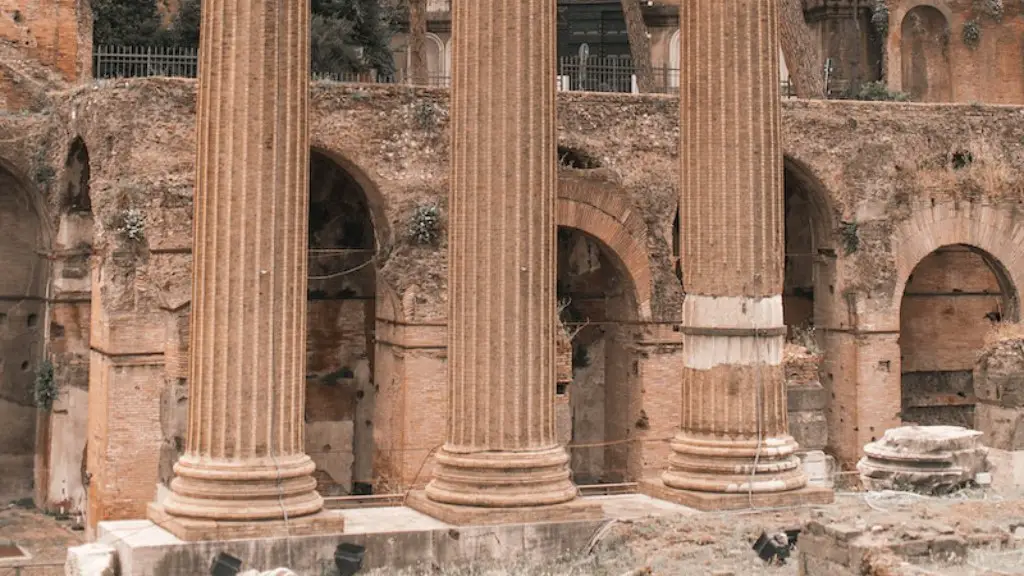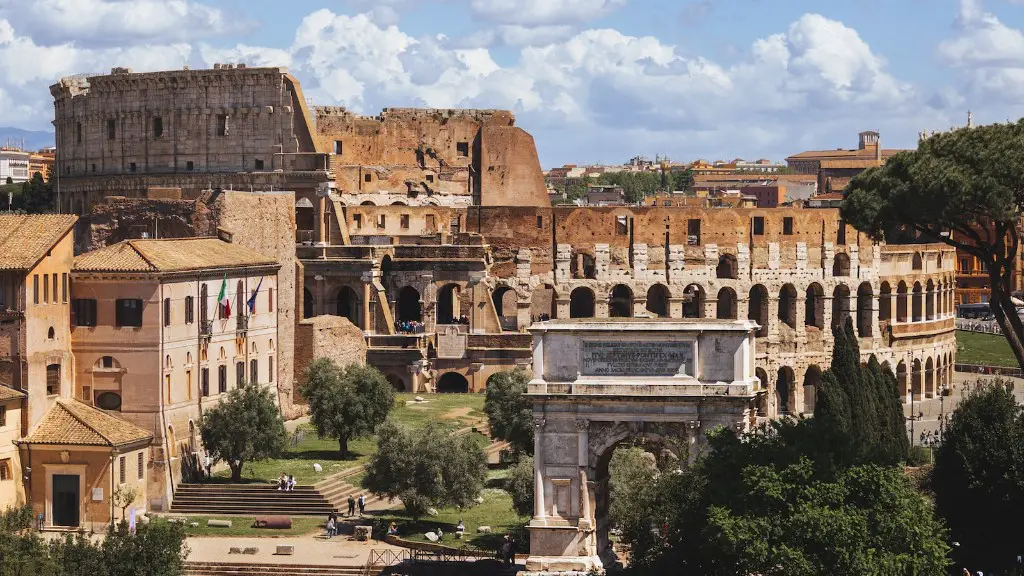The ancient Roman Republic (509 BCE – 27 BCE) was a complex hierarchical system that was divided into two main social classes: the Patricians and the Plebeians. Patricians were the upper class, while Plebeians were the working and middle class. Each class had specific rights, duties and privileges. Within the two social classes were further divisions, such as freedmen, slaves and foreigners. Patriarchy was an important part of Roman society, with the power coming from influential families and wealthy land owners.
The primary way in which a person was classified in ancient Rome was through their place in the social hierarchy. Patricians were the elite and held the most power and wealth. They were landowners and often held political office. Patricians were the only people allowed to serve in the Roman Senate and to hold magisterial authority. They had exclusive rights including religious office and privileges, such as the right to receive grain from the state. Patricians were politically, socially and economically privileged.
Plebeians were the lower class in ancient Rome. They were farmers, craftspeople, merchants, and laboring citizens. They had no voice in politics, and did not have the same social privileges or access to religious offices as the Patricians. The Plebeians had limited rights, including the right to vote, the right to a trial, and the right to marry. Although they did not have the same level of political power or economic privilege, Plebeians made up the majority of citizens in Rome.
In addition to the two main classes, freedmen and slaves were present in Rome. Freedmen were former slaves who had been granted their freedom and had limited rights. Slaves were people who were owned by another citizen. They had no legal or political rights and were used as property to do labor, such as farming and working in homes. Slaves were not citizens and had no protection under the law.
Ancient Rome was a complex social structure in which the power and privilege was held by the Patrician class. The Plebeian class was considered the lower class and did not have the same rights, social status or economic privilege as the Patricians. The presence of freedmen and slaves further complicated the social hierarchy. All of these social classes contributed to ancient Rome’s appearance and structure, and the effects are still visible in modern society.
Religion in Ancient Rome
Religion and spirituality were an integral part of Ancient Roman society. The gods of Rome were central to the beliefs and daily lives of the citizens, and the state was heavily impacted by the religious ceremonies and beliefs. The Pantheon and temples across the city were places of worship where citizens gathered to honor the gods.
The official religion of the Roman state was polytheistic, with the citizens believing in a variety of different gods and goddesses. The most important gods included Jupiter, Juno and Minerva, who each had their own temples in Rome. The gods and goddesses were believed to be responsible for natural phenomena, such as storms and floods, and they also had control over human lives, such as marital bonds, births and deaths.
Religious ceremonies were a common occurrence in Rome, and there were a variety of priests who were in charge of the sacrifices and offerings to the gods. The Vestal Virgins were priestesses who served the goddess Vesta, while the flamens were priests of various deities. The haruspices were soothsayers who used sheep entrails to divine the gods’ will.
Religion in Rome was interwoven with the social classes. The Patricians held positions of power and authority in religious practices, and the Plebeians were mostly excluded from worshipping the gods. This exclusion further influenced the differences between Patricians and Plebeians, as the Patricians had access to something the Plebeians could not.
Law and Justice in Ancient Rome
If a person was wronged or injured in some way, the law was often their only recourse for justice. In Ancient Rome, there was a complex court system with varying levels and laws that determined the punishment a person would receive. Depending on the severity of the offence, a citizen could be tried in a court or a tribunal.
The most common court in Ancient Rome was called the Centumviral Court. This court was made up of one hundred equites (knights) chosen by the praetor (magistrate). This court was most often used for civil lawsuits, such as debt and inheritance.
Other courts in Ancient Rome included the quaestio perpetua (perpetual court), the cornicularius (trial court), and the quaestio de inventis (court of discovery). These courts were used to determine guilt in criminal cases or to declare a person innocent.
The law in Ancient Rome was heavily influenced by social status. Patricians had more rights and privileges than Plebeians, and thus were treated differently in court. Plebeians could not bring charges of adultery against a Patrician, and they had to pay higher fines than the Patricians.
The complexity of the legal system in Ancient Rome was a reflection of the social structure, and it still influences modern law. The two main social classes, Patricians and Plebeians, further divided Ancient Rome and determined success, failure and justice.
Economy of Ancient Rome
The economy of Ancient Rome was based on the three-tiered system of slave labor, subsistence farming, and commerce and industry. Wealthy landowners relied on the labor of slaves to develop and maintain their farms, while the Plebeian class worked to produce and grow food for their families.
Trade was also an important part of the economy of Ancient Rome. Luxury goods, such as spices and fabrics, were imported from other parts of the Mediterranean, while olive oil and wine were major exports. Trade networks allowed goods to be transported over long distances, and there were ports in the major cities as well as smaller trading centers along the coasts.
The Roman economy was primarily driven by the Patricians. They had access to the most resources, land and economic opportunities, and thus had the ability to gain wealth through a variety of different activities. The Patricians had a monopoly on politics, business, and land ownership, and the economy of the Roman Republic was based on their wealth and power.
Military of Ancient Rome
The Roman military was one of the most effective forces in the ancient world. It was responsible for bringing stability to the region and for expanding the Roman Empire. The military was divided into two branches: the heavy infantry, or legiones, and the light infantry, or velites.
The heavy infantry consisted of the Roman legionaries, who were the backbone of the military. They were trained and disciplined, and they could march and fight for long periods of time. The light infantry were made up of archers and javelin throwers who could launch projectiles from a distance, thus providing support for the legionaries.
The military was an important part of Roman society. The Patrician class provided the soldiers who fought in the legions and conquered the lands of Rome. The Plebeians provided the soldiers who fought in the light infantry and the sailors who operated the fleets. The military served both social classes, and the success of the Roman Empire was largely due to the strength of its armed forces.
Architecture of Ancient Rome
Roman architecture was highly advanced, with impressive buildings and monuments constructed and designed by skilled architects and engineers. Arches, columns, and domes were common elements of Roman architecture, and they often incorporated mythical creatures and symbols of divinity.
The most common type of Roman architecture was the villa. These were grand homes and estates that were built by wealthy Patrician landowners. The villas were often decorated with lavish mosaics and sculptures, and they were outfitted with furniture, furnishings, and gardens that were used to entertain guests.
The Colosseum was an iconic Roman structure. This giant amphitheater was built in Rome and could accommodate up to 50,000 spectators. It was used for entertainment purposes, such as gladiator fights, animal hunts, and theatrical performances.
The architecture of Ancient Rome was a reflection of the social structure. It showcased the wealth and privilege of the Patricians and the strength of the Roman Empire. The architecture also highlighted the technological advances of the Roman Republic, as well as its influence in the region.
